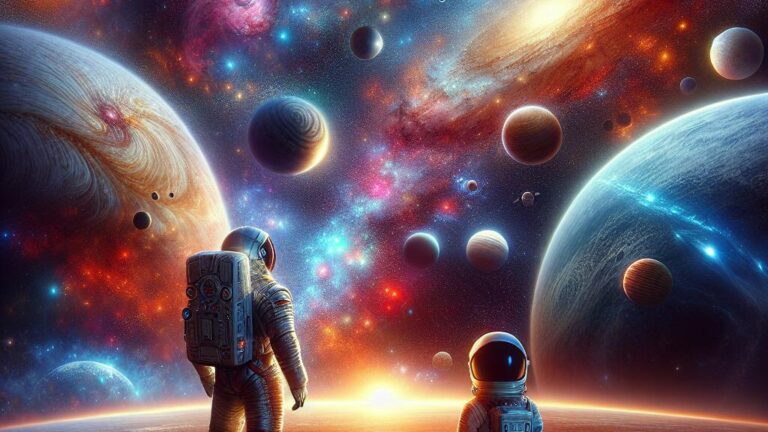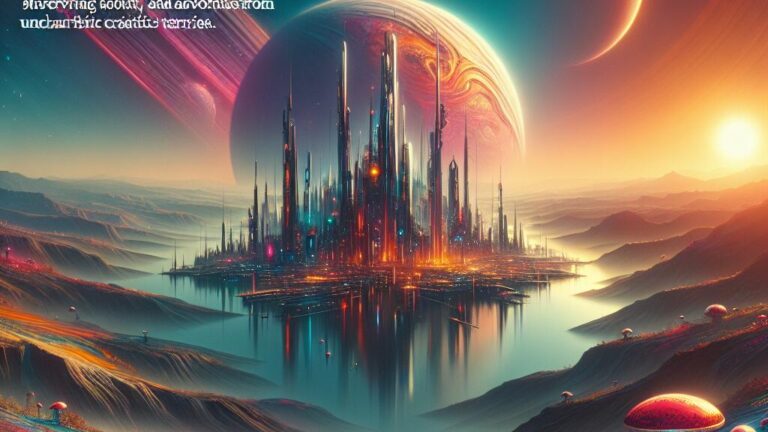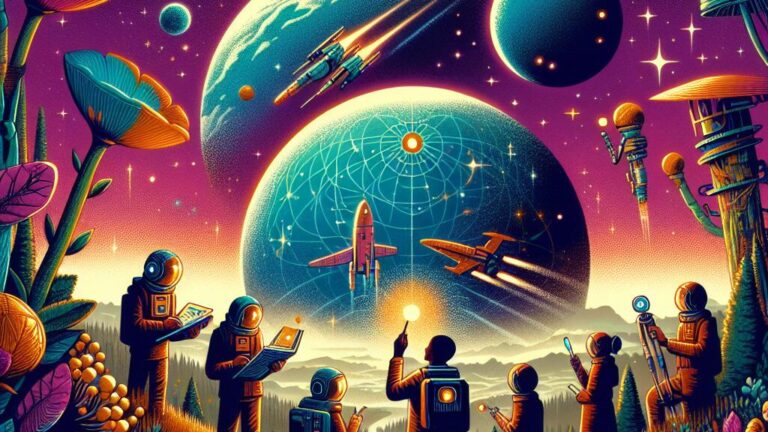The History of Space Exploration
The history of space exploration is a remarkable journey that spans decades of scientific discovery and technological advancements. Beginning with the launch of the first artificial satellite, Sputnik 1, by the Soviet Union in 1957, humanity entered a new era of venturing beyond the confines of Earth’s atmosphere. The subsequent mission of Yuri Gagarin, the first human to journey into outer space in 1961, marked a significant milestone in the exploration of the cosmos.
As the Space Race between the United States and the Soviet Union intensified, monumental achievements were made with the Apollo program leading to the first manned moon landing in 1969. Neil Armstrong’s iconic words, “That’s one small step for man, one giant leap for mankind,” resonated across the globe as humanity set foot on another celestial body for the first time in history. These early missions paved the way for further exploration of our solar system and beyond, inspiring generations of scientists, engineers, and dreamers to push the boundaries of what is possible in space exploration.
Pioneering Missions to the Moon and Mars
Pioneering missions to the Moon and Mars represent significant milestones in the history of space exploration. These missions, driven by a spirit of curiosity and a quest for discovery, have captivated the imagination of people around the world. The Apollo missions to the Moon in the late 1960s and early 1970s marked the first time that humans set foot on another celestial body, showcasing the incredible capabilities of human ingenuity and technology.
Similarly, the ongoing efforts to send robotic rovers and landers to Mars have provided valuable insights into the Red Planet’s geology, climate, and potential for past habitability. These missions have paved the way for future crewed missions to Mars, which hold the promise of expanding human presence beyond Earth. As space agencies and private companies continue to work towards establishing a sustainable presence on the Moon and Mars, the dream of becoming a multi-planetary species is slowly inching closer to reality.
Space Colonization
Space colonization has long been a subject of fascination and speculation in the realm of space exploration. With advancements in technology and a growing interest in the future of humanity beyond Earth, the idea of establishing human settlements on other planets like Mars has become increasingly plausible. Scientists and visionaries alike are considering the logistics and challenges involved in such a monumental endeavor.
Designing habitats for long-term space living is a key aspect of making space colonization a reality. Engineers and architects are exploring innovative ways to create sustainable living environments that can support human life in the harsh conditions of outer space. From inflatable habitats to underground bases, various concepts are being developed to ensure the safety and well-being of future space colonists. The success of such endeavors could pave the way for a new chapter in human history, as we venture beyond our home planet in search of new horizons.
Designing Habitats for LongTerm Space Living
Designing habitats for long-term space living presents a unique set of challenges that require innovative solutions. Architects and engineers are tasked with creating environments that can support human life in the harsh conditions of space. From the International Space Station to potential future bases on the Moon or Mars, these habitats must provide all the necessary resources for humans to thrive, including air, water, food, and shelter. Design considerations involve not only the functionality of the space but also the psychological well-being of the inhabitants who will be isolated from Earth for extended periods.
In space habitats, every square inch of space is precious and must be utilized efficiently. Therefore, architects must explore compact and multifunctional design concepts to maximize living areas while minimizing resource consumption. Technologies such as 3D printing and modular construction can offer flexibility in adapting habitats to changing needs and conditions in space. Additionally, sustainable practices like recycling air and water, as well as growing food through hydroponics or aeroponics, are essential for long-term space living. As we look towards the future of space colonization, the design of habitats will play a crucial role in ensuring the well-being and success of human inhabitants beyond Earth.
Astronomy vs. Astrology
Astronomy and astrology are two fields that are often confused with each other, despite being fundamentally different in nature. Astronomy is a science that studies celestial objects, their movements, and the universe as a whole. It is based on empirical evidence, mathematics, and physics to understand the cosmos. In contrast, astrology is a belief system that suggests a connection between the positions and movements of celestial bodies and events on Earth, particularly human affairs. Astrology is not considered a science due to its lack of empirical evidence and predictive power.
While astronomy follows the scientific method and continuously seeks to expand human knowledge about the universe, astrology relies on ancient beliefs and interpretations for making predictions and assertions about individuals’ lives. Despite the popular appeal of astrology in horoscopes and personality readings, its assertions have not been substantiated by scientific research. In contrast, astronomy continues to make groundbreaking discoveries through observational data, mathematical models, and technological advancements, deepening our understanding of the cosmos.
Differentiating Between Science and Pseudoscience
In the realm of space exploration, the line between science and pseudoscience can sometimes become blurred, leading to misconceptions and misinformation. Science, based on empirical evidence and rigorous testing, seeks to explain the natural world using the scientific method. It relies on verifiable data, peer-reviewed research, and the willingness to revise theories in light of new information.
Pseudoscience, on the other hand, often lacks these crucial components. Claims made in pseudoscientific fields are frequently based on anecdotal evidence, personal testimonials, or unverifiable sources. Pseudoscientific ideas tend to resist scrutiny and fail to adhere to the principles of falsifiability and reproducibility that are the cornerstone of genuine scientific inquiry. By understanding the distinctions between science and pseudoscience, individuals can better evaluate the legitimacy of claims in the ever-evolving landscape of space exploration.
The Role of Artificial Intelligence in Space Exploration
Artificial Intelligence (AI) has revolutionized the field of space exploration, offering innovative solutions to complex challenges. One of the key roles of AI in space exploration is enhancing decision-making processes by analyzing vast amounts of data with speed and accuracy beyond human capabilities. Through machine learning algorithms, AI can sift through massive datasets collected from space missions to identify patterns, anomalies, and potential hazards, providing invaluable insights to space agencies.
Furthermore, AI plays a crucial role in autonomous spacecraft operations, allowing for greater efficiency and autonomy in navigating through space. By deploying AI-powered systems on spacecraft, missions can be conducted with reduced human intervention, enabling real-time adjustments to changing conditions and unforeseen obstacles. This capability not only minimizes risks for human astronauts but also optimizes mission outcomes by adapting to dynamic environments in space.
Enhancing Mission Efficiency with AI Technology
AI technology has revolutionized the way we approach space exploration, offering promising opportunities to enhance mission efficiency. By integrating artificial intelligence into various aspects of space missions, tasks that would have taken humans a significant amount of time and resources can now be completed at accelerated rates with improved accuracy. From data analysis to autonomous decision-making, AI plays a crucial role in streamlining operations and maximizing the potential for successful missions in the vastness of space.
One of the key advantages of utilizing AI technology in space exploration is its capability to adapt and learn in real-time, allowing for quick adjustments and responses to unforeseen challenges. Through machine learning algorithms, AI systems can continuously analyze incoming data, identify patterns, and make informed decisions without human intervention. This adaptive nature of artificial intelligence not only ensures mission efficiency but also significantly reduces the margin for error, paving the way for more successful and groundbreaking space explorations in the future.
FAQS
Can space colonization become a reality in the near future?
Space colonization is indeed a realistic possibility with advancements in technology and ongoing research in designing habitats for long-term space living.
What is the difference between astronomy and astrology?
Astronomy is a scientific study of celestial objects and phenomena, while astrology is a belief system that suggests a relationship between the positions of celestial bodies and events on Earth.
How can artificial intelligence enhance space exploration missions?
Artificial intelligence plays a crucial role in enhancing mission efficiency by assisting in tasks such as data analysis, decision-making, and autonomous navigation.
What are some pioneering missions to the Moon and Mars?
Pioneering missions to the Moon include the Apollo missions, while Mars missions like the Mars Rover expeditions have provided valuable insights into the Red Planet.
How can one differentiate between science and pseudoscience in space exploration?
Science in space exploration is based on empirical evidence and rigorous testing, whereas pseudoscience relies on unproven claims and lacks scientific validation.







